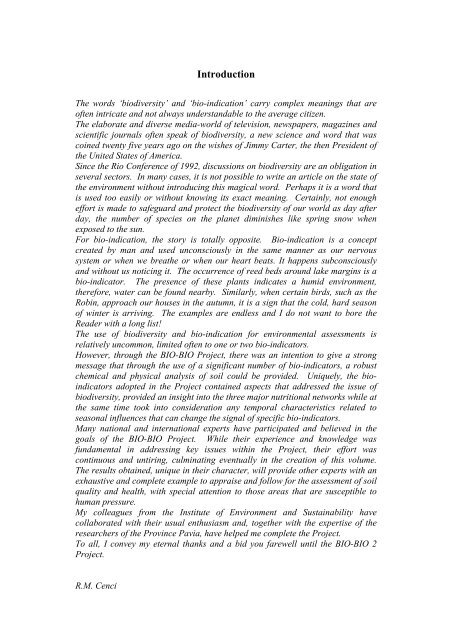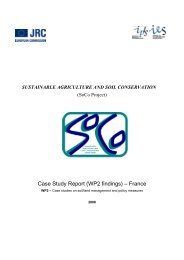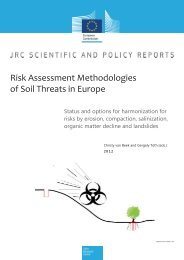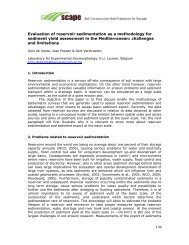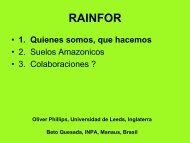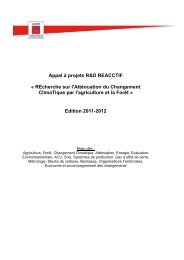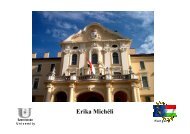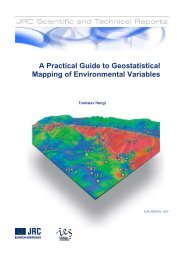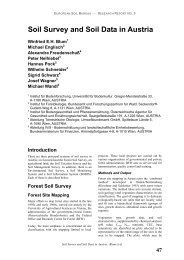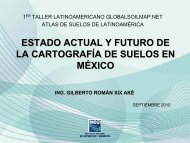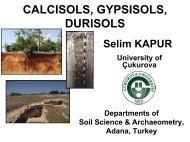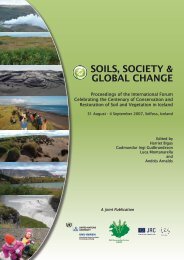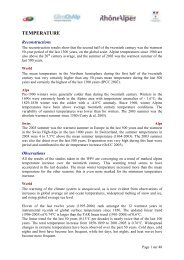Bio - Bio Project - European Soil Portal - Europa
Bio - Bio Project - European Soil Portal - Europa
Bio - Bio Project - European Soil Portal - Europa
You also want an ePaper? Increase the reach of your titles
YUMPU automatically turns print PDFs into web optimized ePapers that Google loves.
Introduction<br />
The words ‘biodiversity’ and ‘bio-indication’ carry complex meanings that are<br />
often intricate and not always understandable to the average citizen.<br />
The elaborate and diverse media-world of television, newspapers, magazines and<br />
scientific journals often speak of biodiversity, a new science and word that was<br />
coined twenty five years ago on the wishes of Jimmy Carter, the then President of<br />
the United States of America.<br />
Since the Rio Conference of 1992, discussions on biodiversity are an obligation in<br />
several sectors. In many cases, it is not possible to write an article on the state of<br />
the environment without introducing this magical word. Perhaps it is a word that<br />
is used too easily or without knowing its exact meaning. Certainly, not enough<br />
effort is made to safeguard and protect the biodiversity of our world as day after<br />
day, the number of species on the planet diminishes like spring snow when<br />
exposed to the sun.<br />
For bio-indication, the story is totally opposite. <strong>Bio</strong>-indication is a concept<br />
created by man and used unconsciously in the same manner as our nervous<br />
system or when we breathe or when our heart beats. It happens subconsciously<br />
and without us noticing it. The occurrence of reed beds around lake margins is a<br />
bio-indicator. The presence of these plants indicates a humid environment,<br />
therefore, water can be found nearby. Similarly, when certain birds, such as the<br />
Robin, approach our houses in the autumn, it is a sign that the cold, hard season<br />
of winter is arriving. The examples are endless and I do not want to bore the<br />
Reader with a long list!<br />
The use of biodiversity and bio-indication for environmental assessments is<br />
relatively uncommon, limited often to one or two bio-indicators.<br />
However, through the BIO-BIO <strong>Project</strong>, there was an intention to give a strong<br />
message that through the use of a significant number of bio-indicators, a robust<br />
chemical and physical analysis of soil could be provided. Uniquely, the bioindicators<br />
adopted in the <strong>Project</strong> contained aspects that addressed the issue of<br />
biodiversity, provided an insight into the three major nutritional networks while at<br />
the same time took into consideration any temporal characteristics related to<br />
seasonal influences that can change the signal of specific bio-indicators.<br />
Many national and international experts have participated and believed in the<br />
goals of the BIO-BIO <strong>Project</strong>. While their experience and knowledge was<br />
fundamental in addressing key issues within the <strong>Project</strong>, their effort was<br />
continuous and untiring, culminating eventually in the creation of this volume.<br />
The results obtained, unique in their character, will provide other experts with an<br />
exhaustive and complete example to appraise and follow for the assessment of soil<br />
quality and health, with special attention to those areas that are susceptible to<br />
human pressure.<br />
My colleagues from the Institute of Environment and Sustainability have<br />
collaborated with their usual enthusiasm and, together with the expertise of the<br />
researchers of the Province Pavia, have helped me complete the <strong>Project</strong>.<br />
To all, I convey my eternal thanks and a bid you farewell until the BIO-BIO 2<br />
<strong>Project</strong>.<br />
R.M. Cenci


